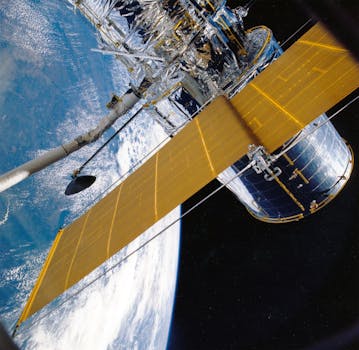
Navigating the Skies: Insights into Recent Satellite Telecommunications Innovations
Satellite telecommunications have come a long way since the launch of the first commercial communications satellite, Intelsat 1, in 1965. Today, satellite technology plays a vital role in global communications, providing connectivity to remote and underserved areas, supporting critical infrastructure, and enabling a wide range of applications, from navigation and weather forecasting to television broadcasting and broadband internet access.
Recent advancements in satellite telecommunications have been driven by innovations in satellite design, launch technology, and ground infrastructure. One of the key trends in the industry is the development of high-throughput satellites (HTS), which offer significantly higher bandwidth and faster data transfer rates than traditional satellites. HTS have enabled the widespread adoption of satellite-based broadband services, including satellite internet, mobile broadband, and maritime communications.
Advances in Satellite Technology
Several recent innovations have contributed to the growth and development of the satellite telecommunications industry. One of the most significant advancements is the development of reusable launch vehicles, which have significantly reduced the cost of launching satellites into orbit. Companies like SpaceX and Blue Origin have pioneered this technology, demonstrating the feasibility of reusing rockets and dramatically lowering the cost of access to space.
Another area of innovation is the development of small satellites, also known as smallsats or cubesats. These tiny satellites, typically weighing less than 100 kg, are designed to be low-cost, flexible, and easily deployable. Smallsats have opened up new opportunities for satellite-based applications, including Earth observation, communications, and scientific research.
Impact on the Industry
The recent innovations in satellite telecommunications have had a profound impact on the industry. One of the most significant effects is the increased competition and reduced prices for satellite-based services. The entry of new players, such as SpaceX and OneWeb, has disrupted the traditional satellite industry, driving down costs and increasing the availability of satellite capacity.
The growth of satellite telecommunications has also enabled the development of new applications and services, such as satellite-based internet of things (IoT) connectivity, precision agriculture, and smart cities. These applications have the potential to transform a wide range of industries, from agriculture and transportation to urban planning and public safety.
Challenges and Future Directions
Despite the many advances in satellite telecommunications, the industry still faces significant challenges. One of the major concerns is the growing problem of space debris, which poses a risk to operational satellites and the environment. The industry is working to develop sustainable practices and technologies to mitigate this issue, including the development of de-orbiting systems and sustainable launch practices.
Another challenge is the need for greater regulatory clarity and coordination. The satellite industry is subject to a complex web of regulations and laws, which can create barriers to innovation and investment. The development of clearer, more consistent regulations will be essential to support the continued growth and development of the industry.

